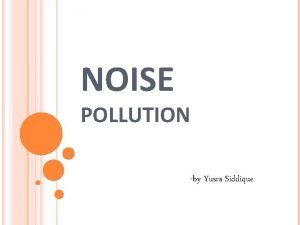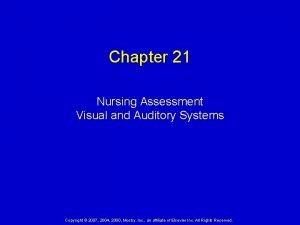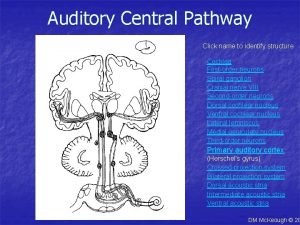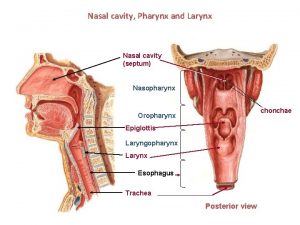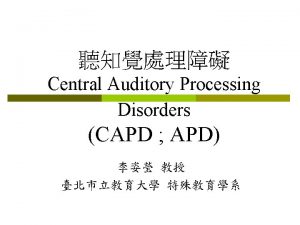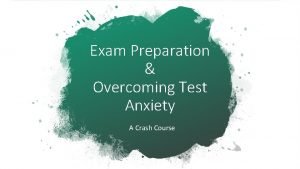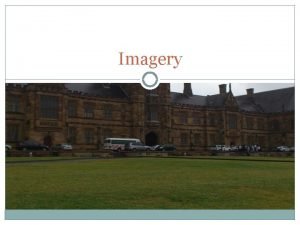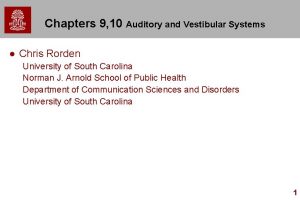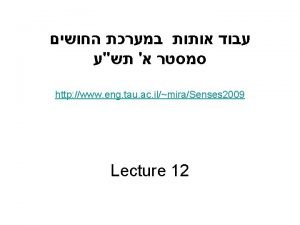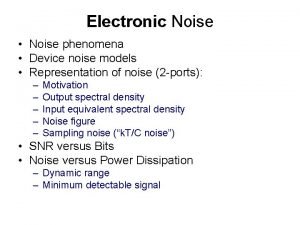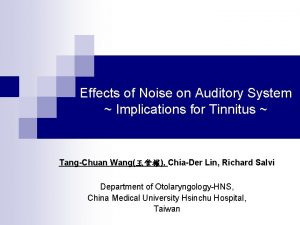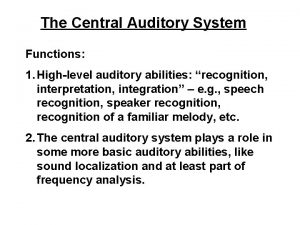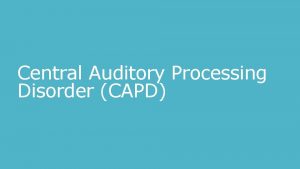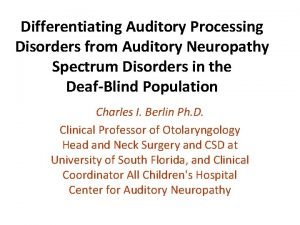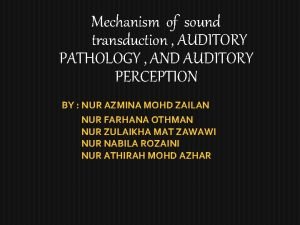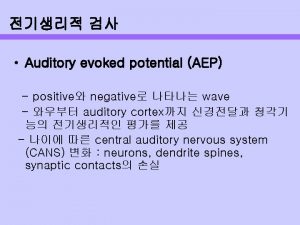Effects of Noise Auditory Effects NonAuditory Effects Although











- Slides: 11

Effects of Noise Auditory Effects Non-Auditory Effects

Although noise-induced hearing loss is one of the most common occupational illnesses, it is often ignored because there are no visible effects, it usually develops over a long period of time, and except in very rare cases, there is no pain.

Excessive noise can cause damage to the nerves in the inner ear. Our ears can recover from a short exposure to loud noise, but being around too much noise over an extended period of time will eventually cause nerve damage and hearing loss. The louder the noise and longer the exposure, the greater chance permanent damage will occur.

Damage and hearing loss occurs in the cochlea of the inner ear.

Auditory Effects • Acoustic Trauma: Sudden hearing damage caused by a short burst of extremely loud noise such as a gun shot • Tinnitis: Ringing or buzzing in the ear. This could be temporary or permanent.

Auditory Effects • Temporary hearing loss: Also known as temporary threshold shift (TTS) which occurs immediately after exposure to a high level of noise. There is gradual recovery when the affected person spends time in a quiet place. Complete recovery may take several hours.

Auditory Effects • Permanent hearing loss: Also known as permanent threshold shift (PTS), it progresses constantly as noise exposure continues month after month and year after year. The hearing impairment is noticeable only when it is substantial enough to interfere with routine activities. At this stage, a permanent and irreversible hearing damage has occurred.

Auditory Effects; Permanent Hearing Loss (continued…) Noise-induced hearing damage cannot be cured by medical treatment and worsens as noise exposure continues. When noise exposure stops, the person does not regain the lost hearing sensitivity. As the employee ages, hearing may worsen as “age-related hearing loss” adds to the existing noise-induced hearing loss.

Non-Auditory Effects • Communication problems at work and with family and friends • Sleep disturbances • Stress • Muscle tension • Ulcers • Increased blood pressure • Weakened immune system

Non-Auditory Effects (continued…) • • Gastrointestinal problems Inability to unwind Annoyance Increased aggressiveness Headaches Anxiety Impatience Nervousness

Non-Auditory Effects (continued…) • Hypertension • Difficulty concentrating which affects: Ø Problem solving Ø Reading comprehension Ø Attention span Ø Job performance

